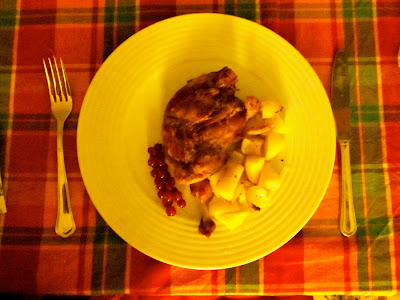 ¡Feliz día de acción de gracias!
¡Feliz día de acción de gracias! Last week I got to spend time with the youngest classes to share my personal expertise on the American holiday of Thanksgiving. This was interesting because, as an American, no meal gets me more excited than cranberry sauce on top of turkey on top of stuffing on top of mashed potatoes with some pie on the side, but my students had mixed reactions to the photos that I showed them of traditional Thanksgiving foods. After a week of stressing the importance of turkey, football, and black Friday, they must all think I’m nuts! It's worth it, though, because I used the “repeat after me” method to teach them that the sound a turkey makes is “gobble gobblet”—thereby secretly initiating them in McCarthiest ritual! Plus, there’s nothing cuter than a hand-turkey on Thanksgiving.
This year I had a real Galician Thanksgiving. Téresa and Fran invited me to their house and we may have eaten the biggest Thanksgiving of my life! It’s hard to compare apples to oranges, or in this case massive quantities of stuffing to the deaths of fifty or so langostinos for which I am personally responsible, but the meal was definitely sizeable. And it was most definitely a Galician Thanksgiving, as the different courses included langostinos, vieras, pato, sweet potato casserole, and yogur con azafrán. Guess which course I contributed! To put the cultural distinction in perspective, I will also mention that I went to seven different markets to find the sweet potatoes! Our meal lasted from about eight o’clock in the evening until one in the morning and featured American music from the eighties, soft lighting for atmosphere, and bubbly Champaign to set the mood!
Because of the aforementioned mood lighting the photos aren’t especially clear—but here is a course-by-course play-by-play of this year’s delicious Galician Thanksgiving!












































